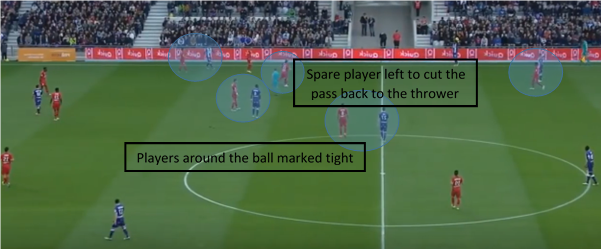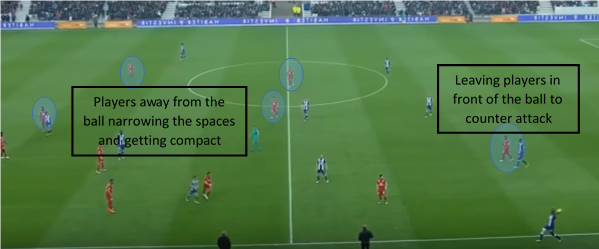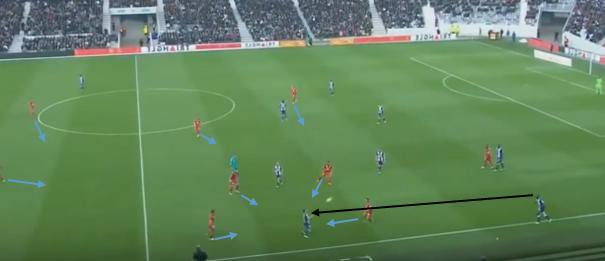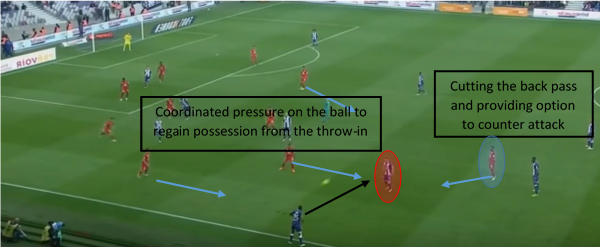By Alex Trukan
The throw-in is an element of the game which is often neglected and not focused on. This is evident across most of the age groups and levels. At the same time, we can observe that if executed correctly, especially in the opposition’s half, it can be used as an important attacking strategy. However, what usually occurs is the loss of possession and transition to defence. This can be used in a clever way as the team that has an attacking throw-in is usually in the attacking shape and not fully organised defensively. For the defending team, it might mean that their organisation can be slightly adjusted in order to be able to exploit transition to attack upon winning possession from a throw-in.
As the opposition has a throw-in, the first step would be to get organised defensively and get compact around the ball. This will mean marking the nearest players around the ball as well as away from it. In addition, what is often neglected is leaving a spare man to pressurise the throw-in taker after the throw. This will cut out an option to play the ball back to him. Pressing of the players should be man oriented in order to be able to prevent the turn as well as be able to intercept the ball.

Players away from the ball are as important as the players around the ball. Their role is to cut the nearest options in case the opposition wanted to recycle play. Depending on the position of the throw-in, it is also recommended to leave players in front of the ball. This will usually mean leaving one/two strikers up front in order to be able to counter attack. As the throw is being taken, their role is to cut the options to play backwards or sideways. This shows that positions of the players might force the direction of play of the opposition.

After the throw has been made, it is important to apply the pressure on the receiving player. The pressure should be made from the direction of available support in order to cut the options to play through and around. In order to prevent the player receiving the ball playing off one touch, pressure might be delayed, allowing him to take the first touch and only then pressurising. This would increase the chances of regaining the ball back straight away rather than forcing it away. Rest of the players need to further condense the spaces.

Some of the teams might choose to intentionally leave one player not marked in order to force certain pass and apply the pressure as the ball is played to him. This can be classed as a throw-in pressing trap. The key is to prevent the pass back to the throw in taker as well as quickly apply pressure so the receiver can’t lift his head up to look for options. This strategy might be particularly useful when trying to counter attack from the own half.
[wpsharely id="2988"][/wpsharely]
This has also important implications for the attacking team which should aim not to give throw –in especially on the own half. Rather than that, players should learn how to stay on the ball and pass forwards rather than into wide areas. Teams might also choose to build up from the back through the middle rather than through the wide areas.
By Alex Trukan, Development Coach, Nottingham Forest
@AlexTrukan


